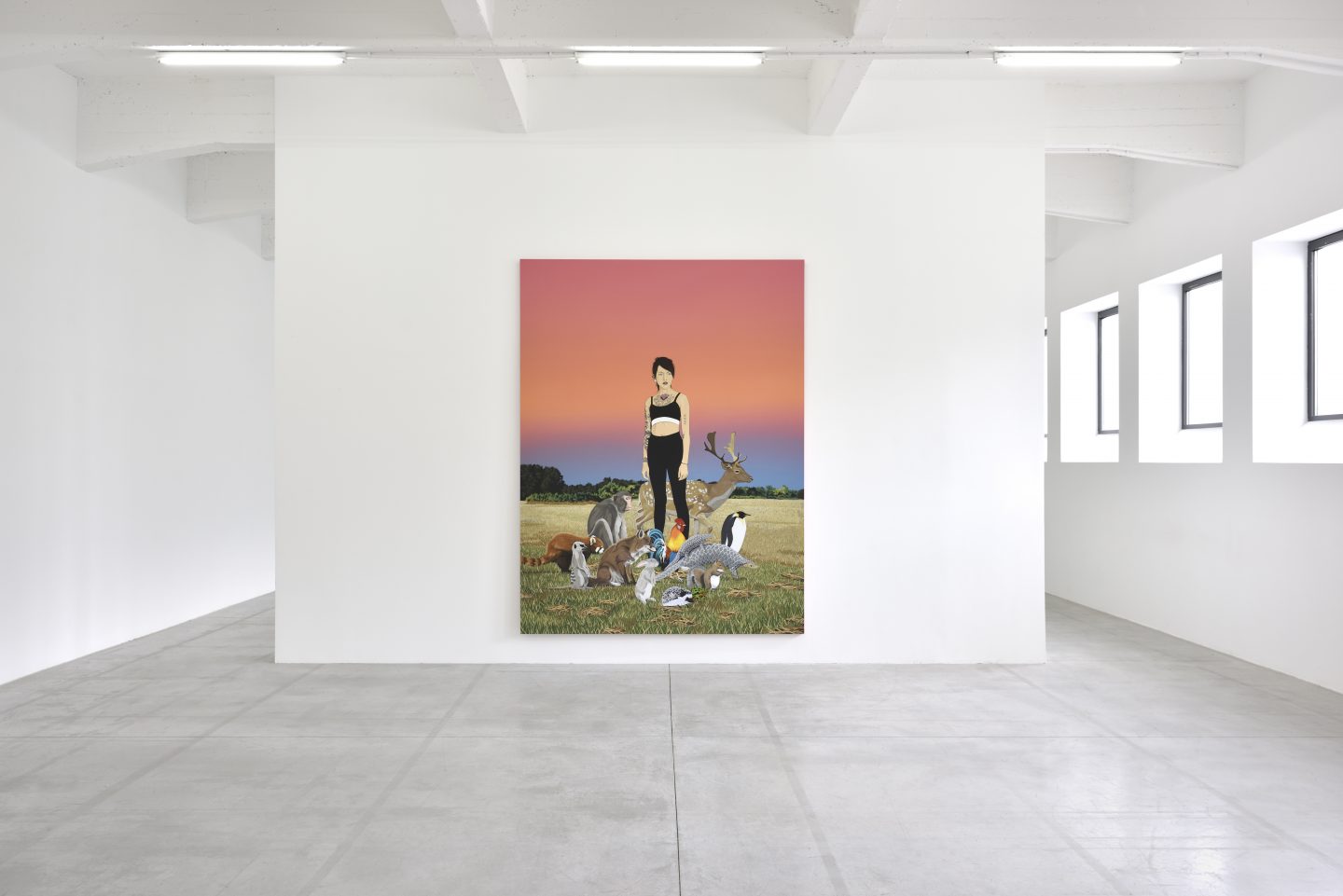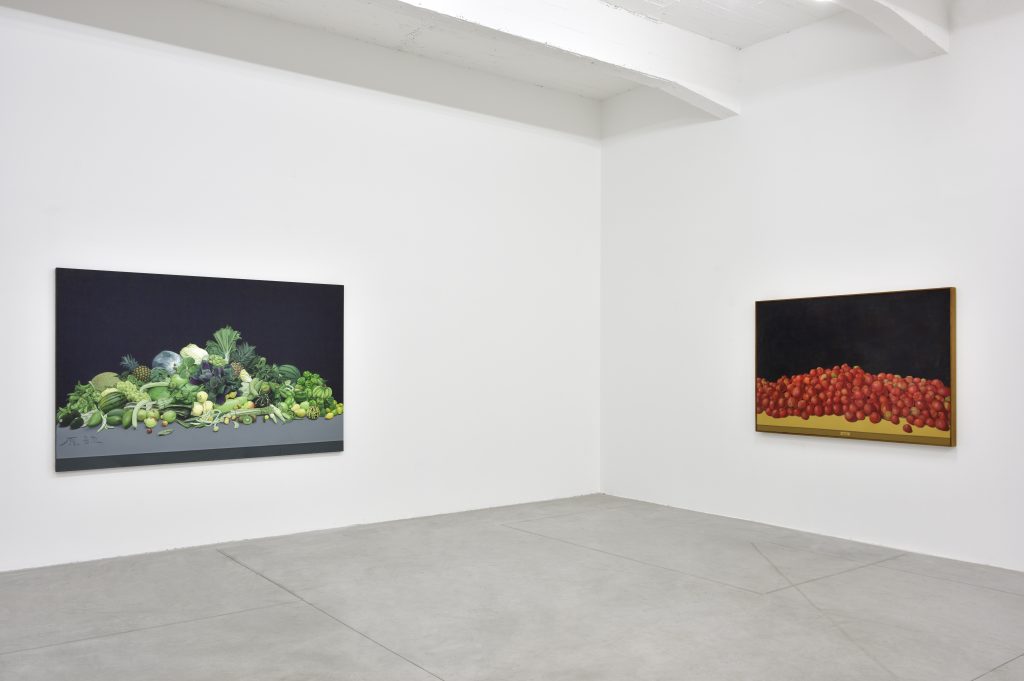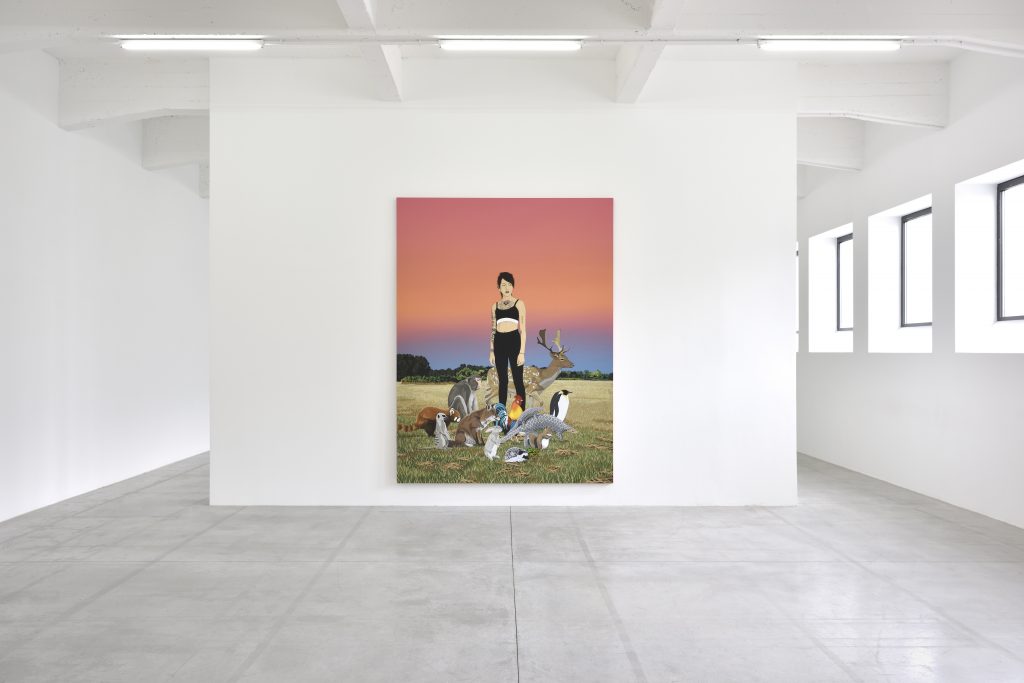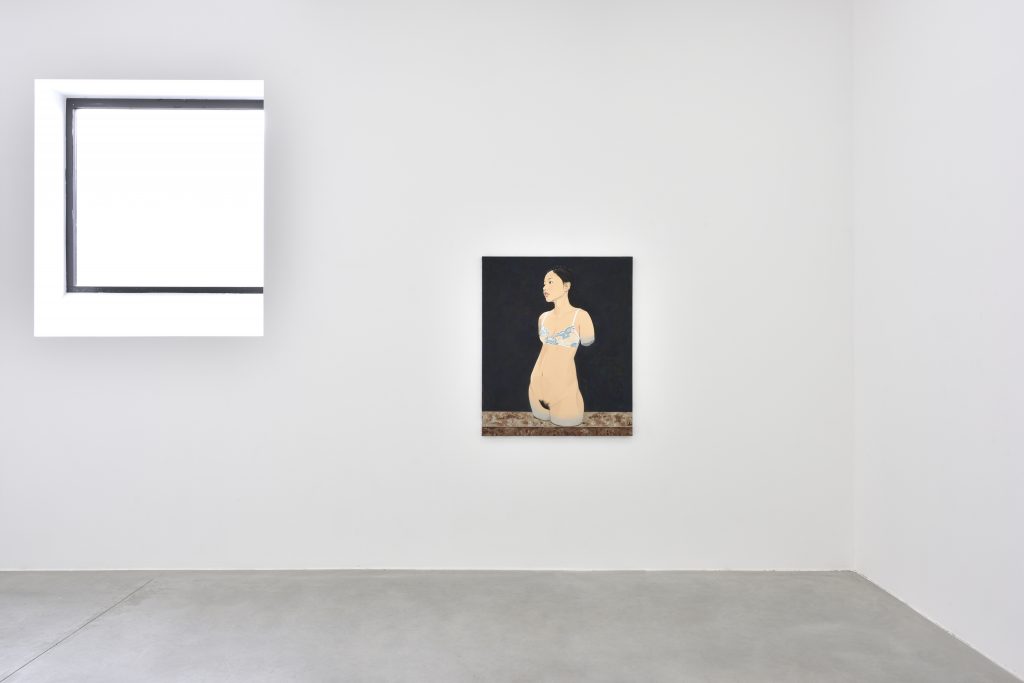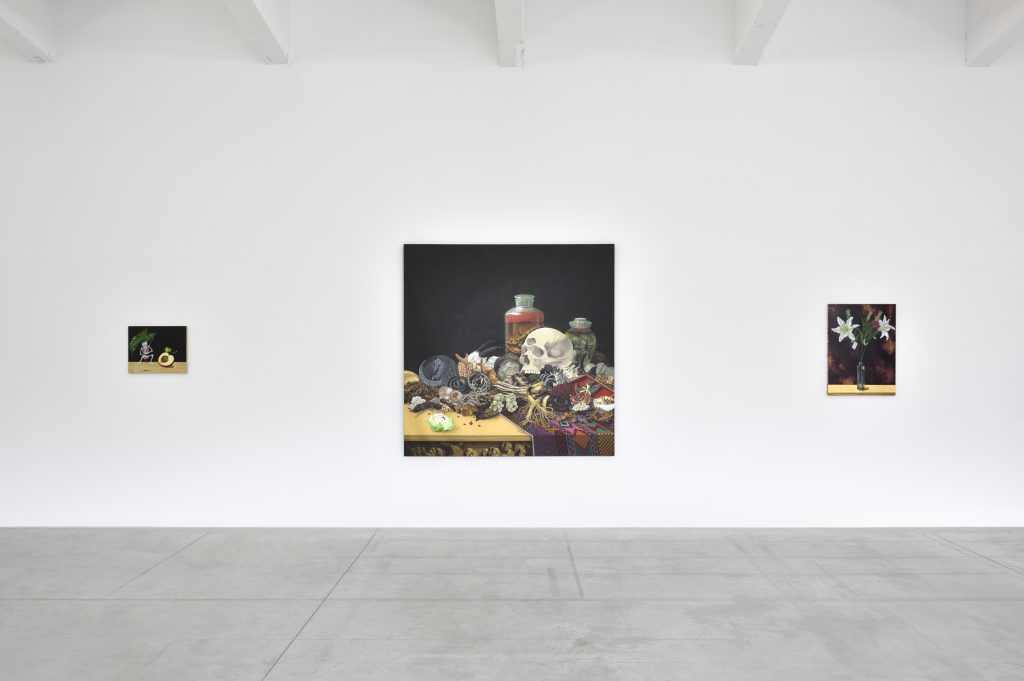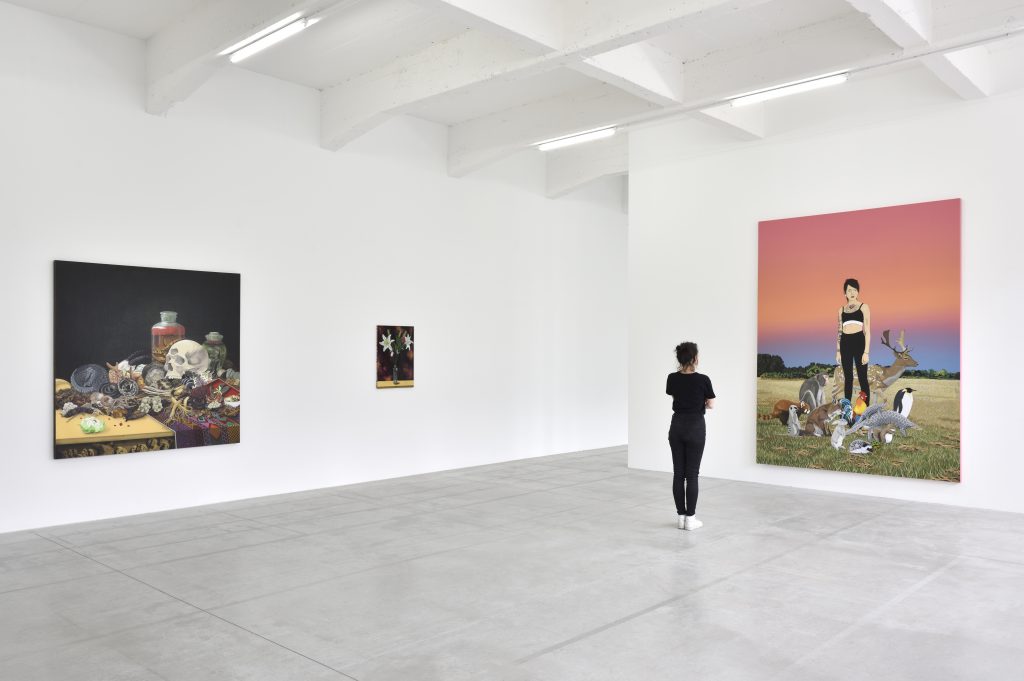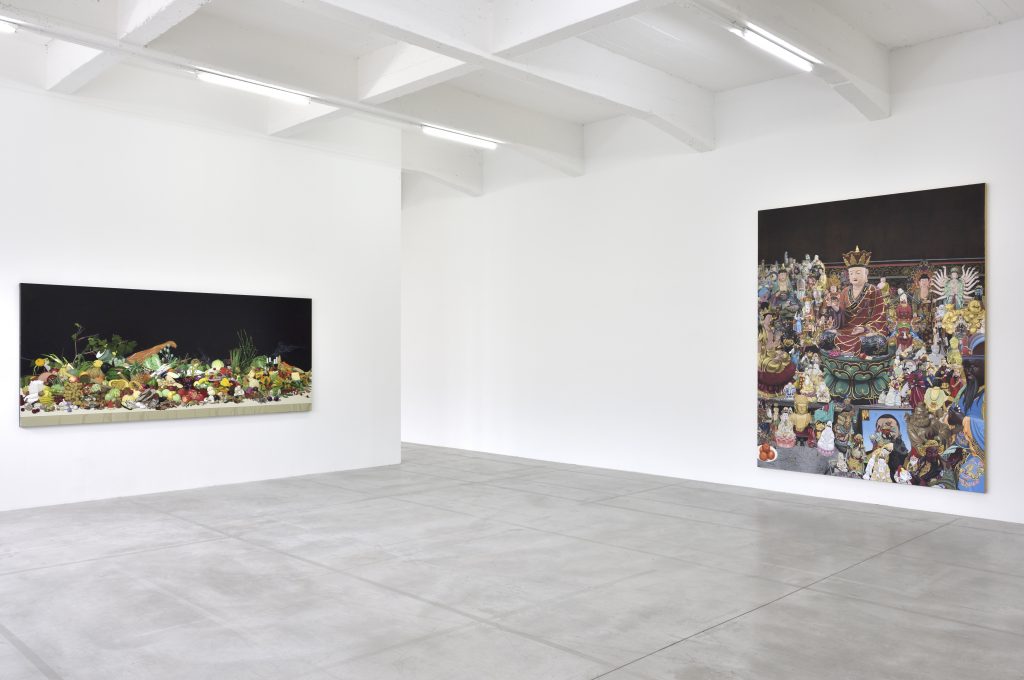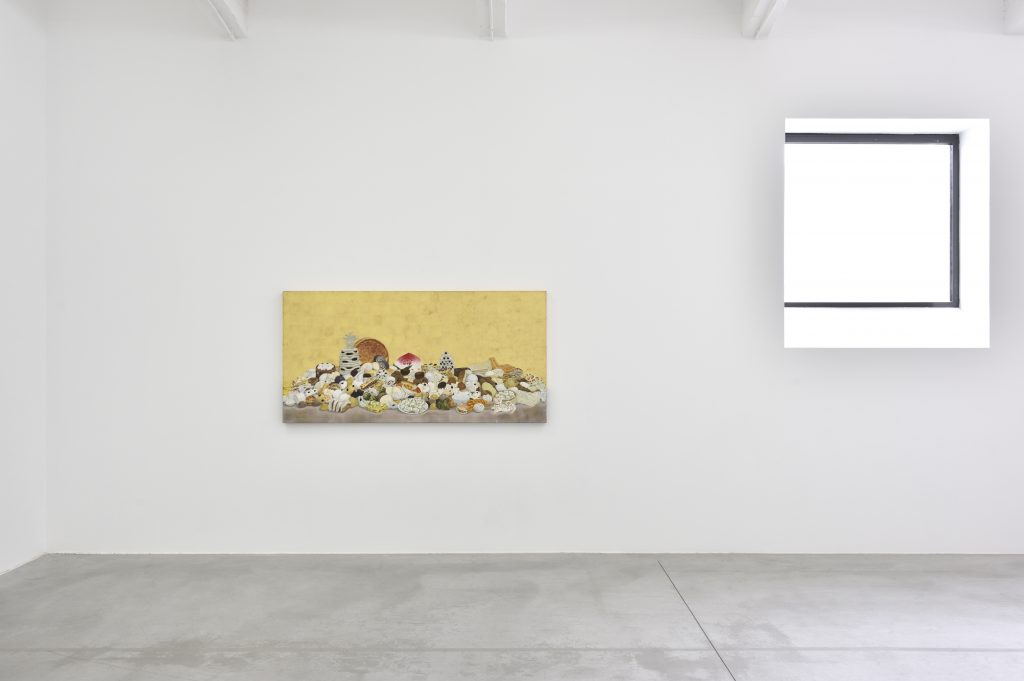For his first institutional exhibition in Europe, the curators have invited Chen Fei to present a group of still lifes and very large-format canvases with all-over compositions featuring arrangements of poultry or buddhas. The paintings are descriptive and precise, with occasional impasto accents or backgrounds of gold leaf and red lacquer. At once direct and explicit, the narratives, upon closer inspection, reveal a web of allusions through characters and incongruous or comical situations.
Titled Grand Lobby, the exhibition brings together some seventeen paintings, two of which were created specifically for this occasion. The title offers a slightly ironic nod to the decorative spaces of Chinese hotel lobbies, banks, or public buildings – formal pomp quickly veering into kitsch, blending cosmetic modernism with cultivated street culture, and evoking the commercial aesthetic of airport terminals. The lobby, as a postmodern mix of Arab majlis, Roman atrium, and countless other entrance spaces, is here expanded into a “Grand” scale, granting it both pomp and surface.
“It’s like entering a hotel lobby or a bed and breakfast run by the State, where we are immediately greeted by a painting that seems auspicious, emanating positive energy, and fulfilling a functional purpose. It’s this kind of inspiration and reflection that has informed my approach,” notes Chen Fei.
The exhibition focuses on still lifes, enlivened with characters from the animal realm – roosters (Modern Times, 2021–2022), or religious figures such as devotional buddhas (Incense Fire, 2021), or human subjects (Natural History, 2016; Untitled, 2018). These paintings attest to the artist’s desire to join the long history of genre painting spanning classical and modern traditions. The compositions are frontal, particularly the still lifes of fruits and vegetables arranged along a table or tray cropped by the edges of the canvas – like fragments of monumental classical frescoes whose larger contexts remain unknown.
Referencing canonical works such as The Last Supper, Chen Fei isolates the culinary ingredients, transforming religious iconography into compositions like For Breadth and Immensity (2018–2019), which inventory fruits and vegetables arranged by shape and colour on a tablecloth, recalling Leonardo da Vinci, Andrea del Castagno, or Pieter Coecke van Aelst. In Forgive (2020), the more monochromatic palette of greens, yellows, off-whites and purples forms a flattened triangular composition, evoking Pieter Aertsen’s Market Scene (1569).
Exploring the conventions of floral still lifes, Chen Fei limits himself to vases of flowers (Friendship, 2022), depicting a simple arrangement balancing a few blooms in a transparent bottle reminiscent of the cylindrical water bottles served in fine restaurants. These paintings subtly engage with long art historical lineages, from Daniel Seghers’ Flowers in a Glass Vase (1635) to numerous other examples now housed in major museums worldwide.
Though anchored in formal traditions, Chen Fei also reflects on contemporary realities: “I think that this series of paintings originated from my beginnings in painting. For instance, I feel there are many subjects I want to paint, but they are fundamentally related to the environment in which I live. I find that taking a direct and literal pictorial approach often lacks meaning and can also seem limited. Although I mentioned my desire to explore themes like geopolitics, social class, history, or various aspects of contemporary reality, painting these themes directly could easily resemble something that looks like satirical caricature. Instead of this, I use still life like a receptacle or container to integrate these themes.”
He also acknowledges the historical context in which his practice is situated: “In Shanghai, for instance, there was a famous artist called Li Mubai, who painted cigarette box models and girlie calendars. His style and forms were a source of inspiration for me. After 1949, artists like him were constrained to create works focused on specific functional themes. Their work shifted toward “functional painting” in response to the historical and political needs of the era. It entailed especially themes related to the positive and edifying values of socialism or works for the purpose of educational propaganda. There was also an array of promotional paintings designed to support various forms of propaganda. This shift reflected the changing role of art in society at that time, when creativity was directed toward social and ideological aims.”
Photos: Rebecca Fanuele © Consortium Museum.
This exhibition is supported by M Art Foundation as part of its commitment to the Consortium Museum’s Asia Pacific Society program.
Chen Fei (b. 1983, Hongtong, Shanxi Province, China; lives and works in Beijing, China) graduated from the Beijing Film Academy in 2005. Originally trained in film, his practice is rooted in highly detailed painting that merges still life traditions with subtle narrative tensions and social commentary. Drawing from both art historical references and popular visual culture, Chen incorporates elements of classical European genre painting, Chinese decorative traditions, and cinematic composition. His work often reflects on contemporary life, geopolitics, and collective memory through indirect and carefully constructed imagery. Exhibiting internationally for over a decade, Chen’s work has been presented at institutions and galleries across Asia, Europe, and the United States.
